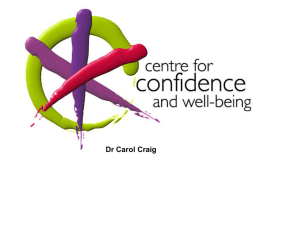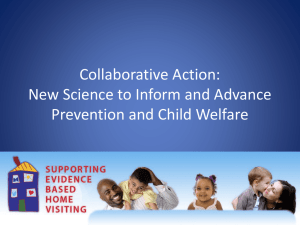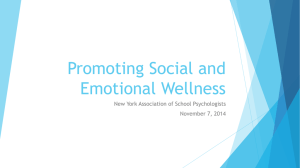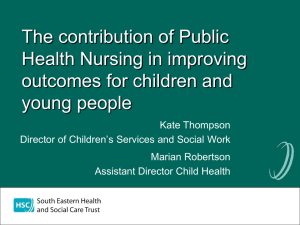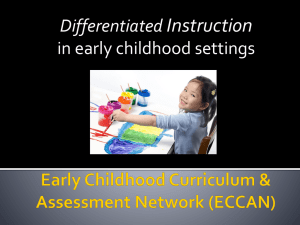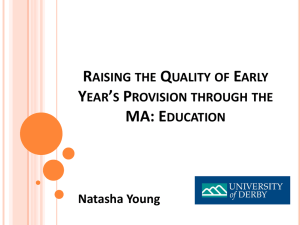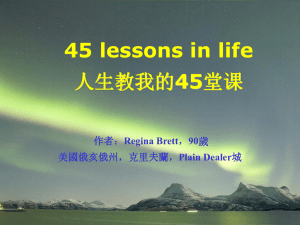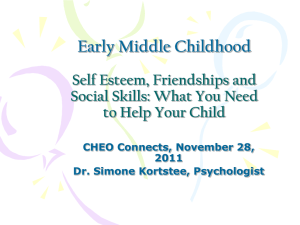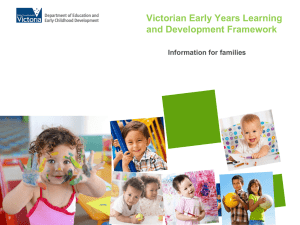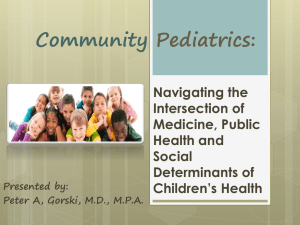Social Determinants 2011 - Early Childhood Mental Health Network
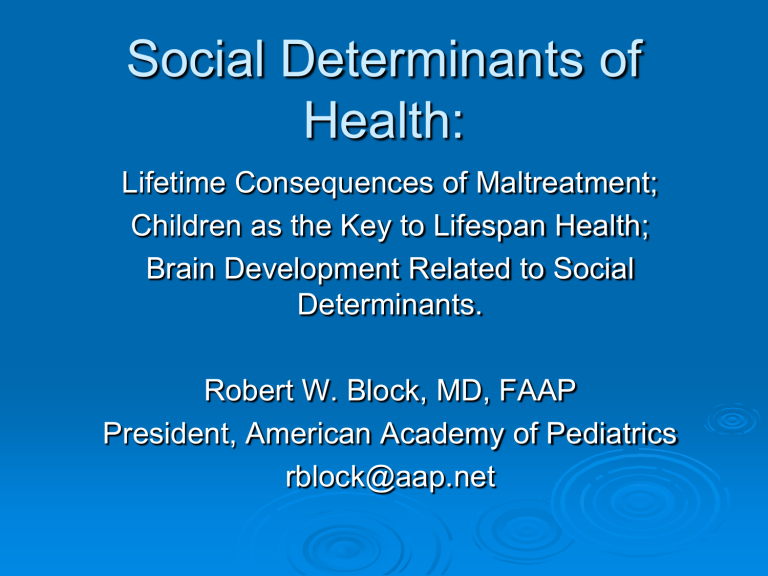
Social Determinants of
Health:
Lifetime Consequences of Maltreatment;
Children as the Key to Lifespan Health;
Brain Development Related to Social
Determinants.
Robert W. Block, MD, FAAP
President, American Academy of Pediatrics rblock@aap.net
Disclosure:
I have no relevant financial relationships with manufacturers of any commercial products nor provider of commercial services discussed in this
CME activity.
I do not intend to discuss unapproved/investigative use of a commercial product/device.
Why Are Social Determinants
Important?
The Heckman Equation
Felitti, Anda: The Adverse Chidhood
Experiences (ACE) Studies
Evolving Science in Brain and Human
Development
The Effects of Toxic Stress
Health and Economics
While not all children are able to become adults, it is certainly true that all adults once were children.
Developing science underscores the need to invest in children’s health, education, and general well-being in order to avoid the continuation of an unsustainable health care system, and a failing system of education.
James J. Heckman
Nobel Memorial Prize Winner
Professor of Economics,
University of Chicago
Equation on Human Capital
Development is a Solution for
Securing America’s Economic
Future.
Many major economic and social problems in America — crime, teenage pregnancy, high school dropout rate, adverse health conditions — can be traced to low levels of skill and social ability such as attentiveness, persistence and impulse control.
Professor Heckman found that early nurturing, learning experiences and physical health from ages zero to five greatly impact success or failure
in society. The most economically efficient time to develop skills and social abilities is in the very early years when developmental education is most effective.
Professor Heckman shows that disadvantaged families are least likely to have the economic and social resources to provide the early developmental stimulation every child needs as a basic opportunity for future success in school, college, career and life.
Professor Heckman studied decades worth of data from early childhood development programs that gave disadvantaged children and their families developmental support.
The Heckman Equation:
Investing in early childhood development builds the human capital we need for economic success.
What determines health?
Genetics
Pre –and perinatal factors
Physical health
Gender
Trauma
Biological
SES
Family stability
Social capital
Work/employment
Value system
Neighborhood/Housing
Religion
HC Policy
HC System
Relations with parents/siblings
Family dynamics
Personality
Resilience
Adaptability
Psychological Social/Cultural
ACCESS Access to and equity in healthcare are key health determinants.
NORTH TULSA
Shorter Life Expectancy
14 Year difference in Life Expectancy
SOUTH TULSA
Longer Life Expectancy
Brain Development
Developing a Model of
Human Health and Disease
Biology
Physiologic Adaptations and Disruptions
Life Course
Science
Through epigenetic mechanisms, the early childhood ecology becomes biologically embedded , influencing how the genome is utilized
Advantages of an E B D Framework
•
Underscores the need to improve the early childhood ecology in order to:
–
–
Mitigate the biological underpinnings for educational, health and economic disparities
Improve developmental /life-course trajectories
•
Highlights the pivotal role of toxic stress
–
–
Not just “ step on the gas ” or enrichment
But “ take off the brake ” by treating, mitigating or immunizing against toxic stress
Brain development in the context of poverty
Hardship & Stress, Isolation & Exclusion, Adverse
Health
Compromised parenting, compromised brain development
↓↓ stimulation
(language and learning)
↑↑ stimulation
(stress)
Allostasis and Allostatic Load
Positive & Tolerable Stress
Toxic Stress
Adversities During Childhood and Toxic Stress
Pediatrics 2012;129:e224-e231 Pediatrics 2012;129:e232-e246
What a Change
“Now, as I said, what a change! How the profession throughout the country is awakening to the demands of the times!”
J.P. Crozer Griffith, Section on
Diseases of Children, AMA, 1898
Epigenetics
Reactions to Fear and Distress
Interprets environment as threatening
Aggression, especially male
Dissociation, especially female
Biology: the hypothalamus-pituitary-adrenal axis – over stimulation can “wear out” the hippocampus, affecting cognition and memory.
How Does Social Environment get Embedded into Biology?
Neighborhood
•Air
•Water
•Soil
•Parks
•Libraries
•Violence
Poverty
Unmet needs
1. Material
• Food
•
Money
•
Access
• Housing
2. Caregiving
• Emotional
• Learning
Stress
HPA
Gene experience
•Brain
•Immune
•CV
Poor Health in Childhood and Adulthood
Social Environment: Example
One
Survey of 67,853 Nurses
Report childhood physical abuse: 54%
Report childhood sexual abuse : 34%
Increased Risk for Adult Type 2 diabetes:
26% – 69%, for moderate to
severe abuse.
Am J Prev Med, 12/2010
Example Two
Survey of 68,505 Nurses
Risk of Uterine Fibroids with increasing severity of childhood abuse:
8% - 36%!
Also found that an emotionally supportive relationship during childhood was protective against this risk.
Jarrett RB, Epidemiology, 11/2010
Example Three
Interpersonal Violence (IPV), and
“Housing Disarray” cause (or, are associated with) an increase in incidence of childhood asthma.
Cumulative or Multiple Stressors are most important.
J Epidemiol Community Health, 2010
Example Four
Among women with chronic pain syndromes, childhood maltreatment histories were associated with increased diurnal cortisol levels.
Abuse can lead to long-term changes in HPA activity.
Important to evaluate childhood experiences in fibromyalgia and pain syndrome patients.
Nicolson NA, et al, Psychosomatic Medicine, 2010
Example Five
Poverty, mediated by chronic stress –
Associated with decreased working memory in young adults.
Evans GW, Schamberg MA, Proceedings of the National Academy of Science, 2009
Last Example
Childhood Traumatic Stress –
Increases the likelihood of hospitalization with a diagnosed autoimmune disease,
“decades into adulthood.”
Dube SR, et al, Psychosomatic Medicine, 2009
•
•
•
Adverse Childhood Experience
(ACE) Study
Adverse Childhood
Experiences (ACEs) are very common
ACEs are strong predictors of later health risks and disease
This combination makes ACEs the
leading determinant of the health and social well-being of our nation
Recurrent physical abuse
Recurrent emotional abuse
Contact sexual abuse
An alcohol and/or drug abuser in the household
An incarcerated household member
Someone who is chronically depressed, mentally ill, institutionalized, or suicidal
Mother is treated violently
One or no parents
Emotional or physical neglect
Categories of Adverse
Childhood Experiences
Category
Prevalence (%)
Abuse, by Category
Psychological (by parents)
Physical (by parents)
Sexual (anyone)
11%
11%
22%
Household Dysfunction, by Category
Substance Abuse
Mental Illness
Mother Treated Violently
Imprisoned Household Member
26%
19%
13%
3%
Adverse Childhood
Experiences
Score
Number of categories adverse childhood experiences are summed …
ACE score Prevalence
0 48%
1 25%
2
3
4 or more
13%
7%
7%
• More than half have at least one ACE
• If one ACE is present, the ACE Score is likely to range from 2.4 to 4
4
2
0
12
10
8
6
Childhood Experiences vs.
Adult Alcoholism
18
16
14
4+
0
1
2
3
ACE Score
5
0
15
10
25
Childhood Experiences
Underlie Suicide
4+
20
3
2
0
1
ACE Score
Health Consequences of ACE
More likely to smoke, have problems with drugs and alcohol
Chronic Obstructive
Pulmonary Disease
Depression
Liver disease
Risk of intimate partner abuse
Multiple sexual partners
Fetal death Suicide attempts
Health-related quality of life
Unintended pregnancies
Ischemic heart disease
